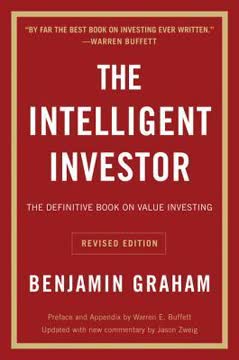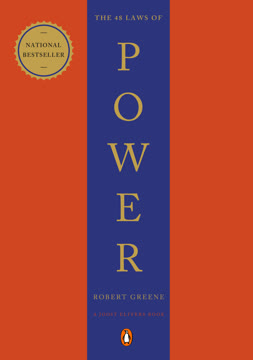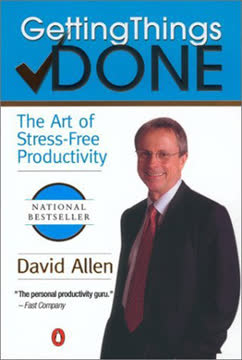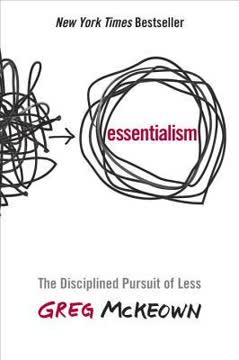Key Takeaways
1. The Habit Loop: How Habits Work
This process—in which the brain converts a sequence of actions into an automatic routine—is known as “chunking,” and it’s at the root of how habits form.
Brain's efficiency. Habits emerge because the brain constantly seeks ways to save effort. It "chunks" sequences of actions into automatic routines, allowing the mind to focus on other tasks. This is controlled by the basal ganglia, an ancient part of the brain.
Three-step loop. Every habit operates on a simple neurological loop:
- Cue: A trigger that signals the brain to go into automatic mode.
- Routine: The behavior itself, which can be physical, mental, or emotional.
- Reward: Something that helps the brain decide if the loop is worth remembering.
Automatic pilot. Once the loop is established, the brain stops fully participating in decision-making for that specific behavior. The pattern unfolds automatically unless deliberately interrupted, which is why habits are so powerful and often hard to break.
2. The Craving Brain: How to Create New Habits
This is how new habits are created: by putting together a cue, a routine, and a reward, and then cultivating a craving that drives the loop.
Anticipation is key. Habits are powered by cravings, a subconscious anticipation of the reward. This craving emerges as the brain associates the cue with the reward, creating a powerful neurological urge.
Dopamine spikes. Research, like Wolfram Schultz's monkey experiments, shows dopamine spikes not just when a reward is received, but when the cue appears, signaling the brain to expect the reward. This expectation fuels the routine.
- Cue (shape) -> Routine (lever) -> Reward (juice)
- Later: Cue (shape) -> Craving (anticipation spike) -> Routine (lever) -> Reward (juice)
Exploiting cravings. Companies like Pepsodent (tingling sensation) and Cinnabon (smell) deliberately create or exploit cravings to make products habitual. The craving for the sensation or the smell drives the purchase, often more than the product itself.
3. The Golden Rule of Habit Change: Why Transformation Occurs
Rather, to change a habit, you must keep the old cue, and deliver the old reward, but insert a new routine.
Replacement, not eradication. Bad habits cannot truly be extinguished; they are encoded in the brain. The most effective way to change a habit is to replace the routine while keeping the original cue and reward.
The formula: Cue + New Routine + Reward = New Habit. This rule is fundamental to many successful change programs.
- Alcoholics Anonymous: Identify drinking cues/rewards (escape, relaxation), replace with new routines (meetings, sponsor calls) for the same reward.
- Tony Dungy: Kept football cues (opponent's stance, ball snap) and rewards (winning), changed players' routines (automatic reactions) for faster execution.
Awareness is half the battle. Identifying the cues and rewards driving a habit is crucial. Often, we don't understand the underlying craving until we consciously look for it, as seen in habit reversal training for nail biting.
4. Belief Is Essential for Lasting Change
Once people learned how to believe in something, that skill started spilling over to other parts of their lives, until they started believing they could change.
Habit replacement isn't always enough. While changing the routine is vital, new habits often fail to stick during stressful moments unless accompanied by belief. Belief that change is possible helps individuals persevere when willpower falters.
Community fosters belief. Belief is often easier to cultivate within a group or community.
- AA: Shared experiences in meetings help individuals believe in the program and their own capacity for sobriety.
- Tony Dungy's team: Shared adversity and mutual support fostered belief in their system, leading to a Super Bowl win.
Shared experience. Seeing others succeed and feeling supported by a community makes the potential for personal change seem more real and attainable. This communal belief provides the strength needed to overcome obstacles.
5. Keystone Habits Drive Widespread Change
Keystone habits start a process that, over time, transforms everything.
Chain reactions. Some habits are "keystone habits" because they initiate a cascade of other positive changes. Focusing on one key habit can lead to widespread transformation in unrelated areas of life or an organization.
Small wins. Keystone habits often create "small wins," minor victories that build momentum and convince people that larger achievements are possible.
- Paul O'Neill at Alcoa: Focused on worker safety (keystone habit), which led to improved communication, quality control, and productivity.
- Exercise: Often leads to better eating, reduced smoking, increased productivity, and less stress.
Structural change. Keystone habits create structures that facilitate other habits. Food journaling, for instance, provides a framework for healthier eating choices. Identifying and cultivating these pivotal habits is key to significant change.
6. Willpower Is a Muscle That Can Be Strengthened
Willpower isn’t just a skill. It’s a muscle, like the muscles in your arms or legs, and it gets tired as it works harder, so there’s less power left over for other things.
Finite resource. Willpower is a limited resource that gets depleted with use. Exerting self-control in one area makes it harder to do so in another, as shown in the radish-and-cookie experiment.
Practice strengthens. Like a muscle, willpower can be strengthened through practice. Studies show that engaging in activities requiring self-discipline, such as exercise or financial monitoring, increases willpower in other areas of life.
- Regular exercise improved willpower in diet, smoking, and productivity.
- Financial monitoring improved willpower in spending, smoking, and eating habits.
Spillover effect. Strengthening willpower in one domain spills over, making it easier to exert self-control in unrelated situations. This suggests that building self-discipline is a fundamental habit that impacts overall success.
7. Willpower Becomes Automatic with Planning and Autonomy
When people are asked to do something that takes self-control, if they think they are doing it for personal reasons—if they feel like it’s a choice or something they enjoy because it helps someone else—it’s much less taxing.
Planning for inflection points. Willpower is most likely to fail at "inflection points"—moments of stress or temptation. Having a predetermined plan for how to react to these cues makes self-control automatic.
- Scottish patients recovering from surgery: Wrote detailed plans for handling pain during specific activities.
- Starbucks employees: Trained using the LATTE method (Listen, Acknowledge, Take action, Thank, Explain) for dealing with angry customers.
Autonomy reduces depletion. Feeling in control and believing you are acting for personal reasons or to help others significantly reduces willpower depletion. Conversely, feeling like you're just following orders drains self-control faster.
Empowerment works. Giving individuals a sense of agency, even in small decisions, increases their self-discipline and engagement. This is why companies like Starbucks empower employees to make decisions about their work environment and customer interactions.
8. Organizations Have Habits (Routines) and Truces
Much of firm behavior... is best "understood as a reflection of general habits and strategic orientations coming from the firm’s past," rather than "the result of a detailed survey of the remote twigs of the decision tree."
Routines govern behavior. Companies, like individuals, are guided by organizational habits or "routines." These unwritten rules and patterns emerge from countless individual decisions and dictate how work gets done.
Creating truces. Routines are crucial because they create truces between competing individuals or departments within an organization. They provide a framework for cooperation despite internal rivalries.
- Sales teams agreeing on discount limits.
- Executives avoiding sabotaging colleagues.
Dysfunctional patterns. When routines and truces are not deliberately designed or are unbalanced, they can lead to destructive patterns, inefficiency, and conflict, as seen in the communication failures at Rhode Island Hospital.
9. Crises Create Opportunities to Change Organizational Habits
You never want a serious crisis to go to waste.
Malleable moments. Organizational habits and truces are typically resistant to change. However, crises make routines malleable, creating a window of opportunity for leaders to implement significant reforms.
Exposing flaws. Crises expose the weaknesses in existing routines and truces, making it clear that the old ways are no longer sustainable.
- King's Cross fire: Revealed dysfunctional departmental habits and truces that prioritized turf over safety.
- Rhode Island Hospital errors: Highlighted toxic relationships and lack of clear safety protocols.
Deliberate action. Wise leaders seize crises to deliberately redesign organizational habits, clarify responsibilities, and foster a culture of change. This often involves creating a sense of urgency and empowering individuals to act.
10. Companies Predict and Manipulate Habits
Target can purchase data that indicates a shopper’s ethnicity, their job history, what magazines they read, if they have ever declared bankruptcy, the year they bought (or lost) their house, where they went to college or graduate school, and whether they prefer certain brands of coffee, toilet paper, cereal, or applesauce.
Data-driven prediction. Retailers like Target use vast amounts of data to predict individual shopping habits, often knowing what customers want before they do. This allows for highly personalized marketing.
Life changes as opportunities. Major life events, such as having a baby, make consumers' habits more flexible and susceptible to marketing interventions. Companies target these moments to capture new, long-term customers.
- Target's pregnancy predictor: Used purchasing patterns (unscented lotion, vitamins) to estimate due dates and send targeted coupons.
- Music industry: Used data to predict song popularity and listener tune-out rates.
Camouflaging the unfamiliar. To introduce new products or influence habits without causing discomfort, companies often camouflage the unfamiliar within existing, familiar patterns.
- Target mixed baby coupons with unrelated ads.
- Radio stations sandwiched new songs ("Hey Ya!") between familiar, "sticky" hits.
11. We Are Responsible for Our Habits
Once you understand that habits can change, you have the freedom—and the responsibility—to remake them.
Habits are not destiny. While habits are powerful and can feel automatic, they are not immutable. They are choices made at some point that became automatic, but they can be consciously changed.
Awareness brings responsibility. Understanding how habits work—identifying cues, routines, and rewards—gives individuals power over their behaviors. This awareness implies a responsibility to manage and change one's habits.
- Brian Thomas (sleepwalking): Acquitted because he was unaware of the habit driving his actions.
- Angie Bachmann (gambler): Held responsible because she was aware of her gambling habit and its destructive nature, despite powerful cravings.
The power of choice. The ability to identify and intentionally change habits is the core of self-control and personal transformation. This capacity, once recognized, empowers individuals to shape their lives.
Last updated:
Review Summary
Smarter Faster Better, The Power of Habit receives mixed reviews on Goodreads, with an overall rating of 4.27 out of 5 stars. Some readers find it a must-read, praising the author's extensive reviews on motivation and habit formation. Others consider it merely okay or good. One reviewer specifically mentions only reading "The Power of Habit" portion. A critical review gives it 2 stars, though it's unclear if this is for the entire book or just "The Power of Habit" section. The varied ratings suggest diverse reader experiences and expectations.
Similar Books










Download PDF
Download EPUB
.epub digital book format is ideal for reading ebooks on phones, tablets, and e-readers.







